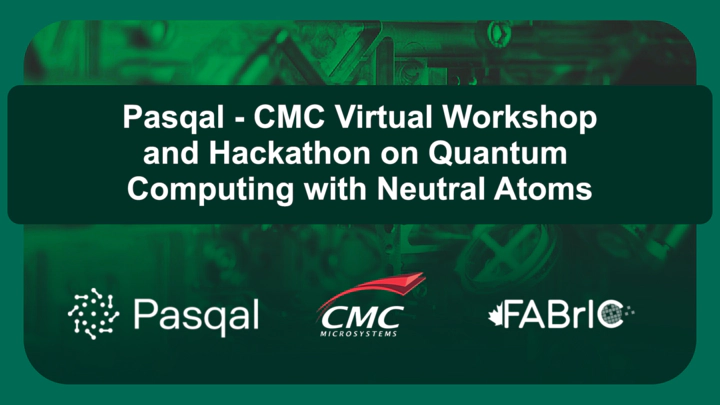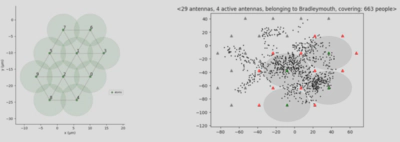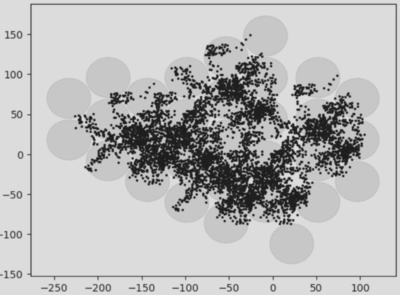CQTech Team Wins First Place at Pasqal-CMC Microsystems Hackathon

CQTech achieved a remarkable success by securing first place at the Pasqal-CMC Microsystems Hackathon, a competitive event that brought together teams focused on leveraging quantum technology to address real-world challenges. Over two weeks, the CQTech team participated in workshops on Neutral Atoms Quantum Computers (NAQCs), Pulser (Pasqal’s open-source library for programming NAQCs), and learning digital and analog computing techniques in preparation for the event’s challenge.
The Hackathon challenge was to use NAQCs to solve an optimization problem: positioning telecom antennas in cities to maximize coverage with no interference. With this goal in mind, the CQTech team, composed of 4 CQTech researchers including a Master’s student, designed a solution that went beyond the challenge’s specifications. They applied a hybrid classical-quantum approach, where the quantum component simulates the interactions and coverage of antennas using the Rydberg blockade mechanism—a characteristic feature of neutral atom systems. The project’s success was highlighted during the final presentation and Q&A session, after which team CQTech was awarded the joint 1st prize.

The image above demonstrates a partial solution for one of the cities in the dataset. On the right, the city is mapped with candidate antenna positions scattered throughout. Red markers indicate positions excluded due to interference constraints, while green markers show selected antenna locations, with gray circles representing their coverage areas. On the left, a model of neutral atoms and their Rydberg blockade radii simulates the interactions and coverage overlap that are critical for antenna placement optimization.

CQTech’s approach also proved scalable to larger cities than the ones provided in the challenge’s dataset using the hybrid classical-quantum techniques developed during the Hackathon. The Hackathon project and the team’s solution showcase how NAQCs can bring quantum computing’s advantages to real-world optimization tasks. Finally, the team expresses its gratitude to the Hackathon’s organizers for their great work and support during the event’s two weeks.